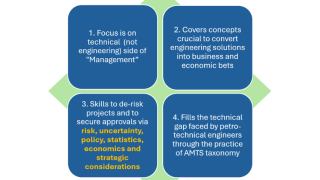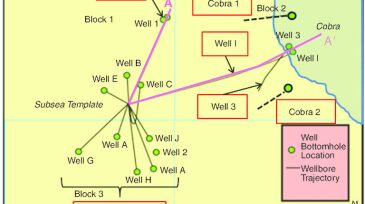Risk management
This paper discusses cases from the North Sea and offshore California in which high-fidelity pressure and dynamics measurements, combined with high-speed telemetry, helped overcome complex geotechnical challenges.
The SPE Asset Management Technical Section (AMTS) is teaming up with the University of Houston to launch a pilot program that advances asset management practices and supports the growth of energy professionals worldwide—setting a model for future collaborations between universities and SPE technical sections.
The SPE Management Technical Section has been officially renamed the Asset Management Technical Section. The new name better reflects the section’s focus on asset management as a core discipline in the upstream oil and gas industry.
-
A subject field perhaps little known in the oil and gas industry is action science, a strategy for increasing the skills and confidence of individuals in groups to create organizations and to foster long-term individual and group effectiveness.
-
Many business and digital corporations claim that between 100 billion and 200 billion devices could be connected by 2020.
-
Failure to prioritize objectives and improper selection of candidate wells can have significant implications for both derived value and potential risk.
-
Data mining for production optimization in unconventional reservoirs brings together data from multiple sources with varying levels of aggregation, detail, and quality.
-
Nontechnical risks, primarily around HSE or social responsibility, increasingly pose risks to project timelines. To manage these risks, companies are seeking systems that can ensure quality performance in these operational areas.
-
The Fast Drill Process has become a well-known work flow to identify hole-making limiters and mitigate them through redesign to the economic limit of performance.
-
“Decision Making: What Makes a Decision Good,” was the topic of a recent webinar held by the SPE Human Factors Technical Section.
-
Unconventional resources include coalbed methane, tight gas, and source-rock-based (often shale-based) reservoirs.
-
Many companies are seeking 20% to 50% reductions in project costs. This level of capital cost reduction requires serious rethinking of the strategy for developing and executing projects.
-
The process of risk and uncertainty reduction in unconventional-drilling operations starts with improving techniques for pore-pressure modeling.













